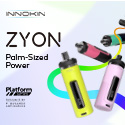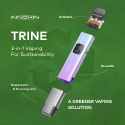This Lithicore cell appears identical to, and performs identically to, the 20A 2500mAh LG HE2/4. Those LG cells are average performers, using older battery tech, that are outperformed by a lot of other cells we can buy. Even the Samsung 25R. Other better performers in the same capacity range are the Sony VTC5/VTC5A/VTC5D, Samsung 24S/25S, and Molicel P26A/P28A.
I recently posted about a large number of concerns I have about Lithicore and their cells (same post to all three sites):
• Facebook: https://www.facebook.com/batterymooch/posts/2406399516316287
• ECR (Reddit): https://www.reddit.com/r/electronic_cigarette/comments/cf6k3f/i_have_some_concerns_about_lithicore_batteries/
While I am happy to report that only a continuous discharge rating is on the wrap of this cell their web site (as of this date) lists a useless “Max pulse” rating of 35A.
Lithicore claims that they manufacture this cell in their factory using the same parts and battery “chemistry” as LG (I address this in my post that I link to above). If Lithicore manufactured this cell though then why pick a cell like the LG HE2/HE4 to copy? Why not a higher performance cell, especially when this Lithicore sells for over twice as much as the LG HE4 that Lithicore says they copied?
Using the same battery chemistry as the LG HE4 would mean this cell does not use the same chemistry as a LiPo. But Lithicore claims in their Material Safety Data Sheets (MSDS)*** that all six of their cells use the same battery chemistry as LiPo’s. That does not mean they are all dangerous! If it was true though it would mean that if they are misused or mishandled that they can go into thermal runaway, and possibly burst, at a lower temperature and that their reactions during runaway are more violent than the other Li-Ion battery chemistries we can use.
A big reason why MSDS’ exist in the first place is to inform employees and first-responders of the risks involved if they need to handle a spill or fire involving a product. An incorrect MSDS makes responding properly harder to do.
Lithicore’s MSDS’ list identical chemical compositions for all six of their cells, down to 1/100th of a percent. Even if all of them were actually made by the same factory, using the same chemistry, in my opinion they could not have the same percentages of chemicals, metals, plastics, etc., across four different sizes, six different capacity ratings, and multiple current ratings. Different capacity cells use different ratios of the chemicals. Cells with different current ratings use different thicknesses of metal foil to spread the cell goop on and different thickness and quantities of the metal tabs to conduct the current to and from the top and bottom contacts inside the cells.
If the MSDS is incorrect that would mean that any vendor importing Lithicore cells into their country, like in the EU, would be submitting an incorrect document to the authorities. This means the wrong substances are being registered and could affect whether that vendor can sell the Lithicore cells they bought if the MSDS error is found. I suspect the vendors would be pretty unhappy to hear about that.
If you believe the MSDS safety documents are accurate then Lithicore is using the same chemistry as LiPo’s. If these Lithicore cells are actually using the same chemistry as LG HE2/4’s, or if they are rewrapped LG cells, then non-LiPo chemistries are being used and the MSDS is wrong. No matter which it actually is, this earns this Lithicore cell a Do Not Buy recommendation from me. Filing incorrect safety documents would be unacceptable and with all of the other cells we can buy, why would we buy ones that use the same chemistry as LiPo‘s?
Four cells were donated for the purposes of testing.
Ratings graphic and MSDS: https://imgur.com/a/VEo3PBc
Test report: https://bit.ly/2JGuQM3
I want to work for the vaping community full time! If you feel what I do is worth a couple dollars a month and you would like early access to battery availability and testing news and a say in what I test then please consider becoming a patron and supporting my testing efforts: https://www.patreon.com/batterymooch
These tests only note the ESTIMATED ratings for these batteries at the time I tested them. Any battery that is not a genuine Samsung, Sony, Murata, LG, Panasonic, Molicel, or Sanyo can change at any time! This is one of the hazards of using “rewrapped” batteries or batteries from other manufacturers so carefully research any battery you are considering using before purchasing.
Misusing or mishandling lithium-ion batteries can pose a SERIOUS RISK of personal injury or property damage. They are not meant to be used outside of a protected battery pack. Never exceed the battery’s continuous current rating and keep the plastic wrap and top insulating ring in perfect condition.
Any rating in my ratings tables can change at any time as different grade cells appear on the market, we get swamped with fakes, or new information becomes available to me. Please, never assume that the ratings in the tables are permanent and will never change! Always download the latest version before considering any cell purchase.
To see how other cells have tested check out this link: https://www.e-cigarette-forum.com/forum/blog-entry/list-of-battery-tests.7436/









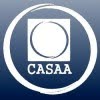





 Store
Store
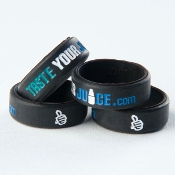
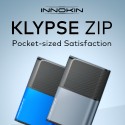
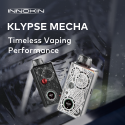
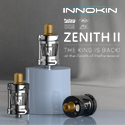

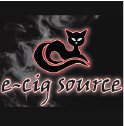
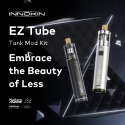
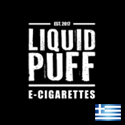

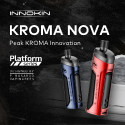

125x125.jpg)
